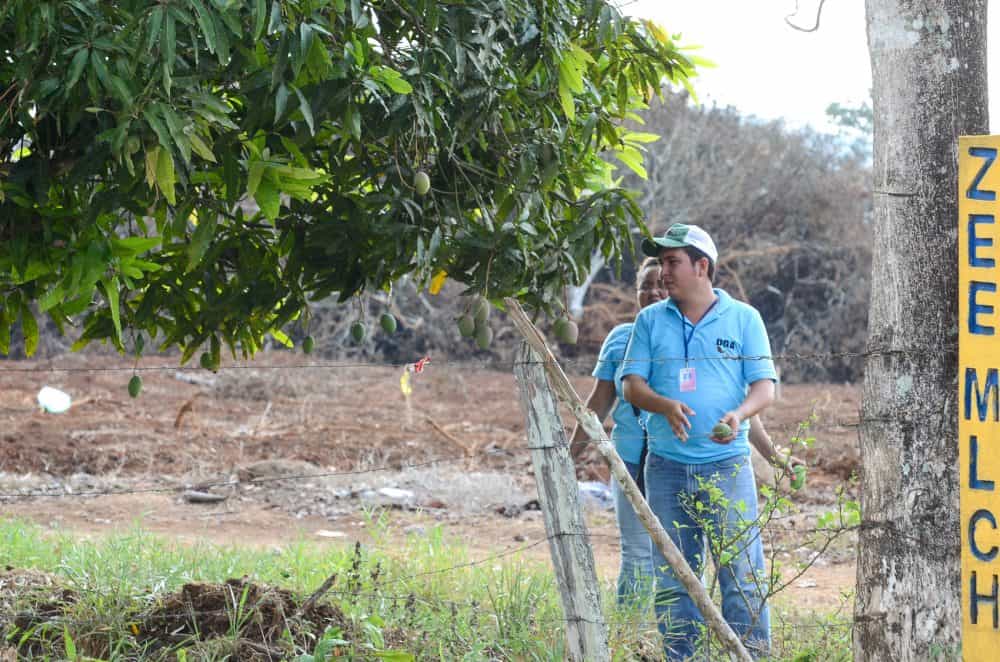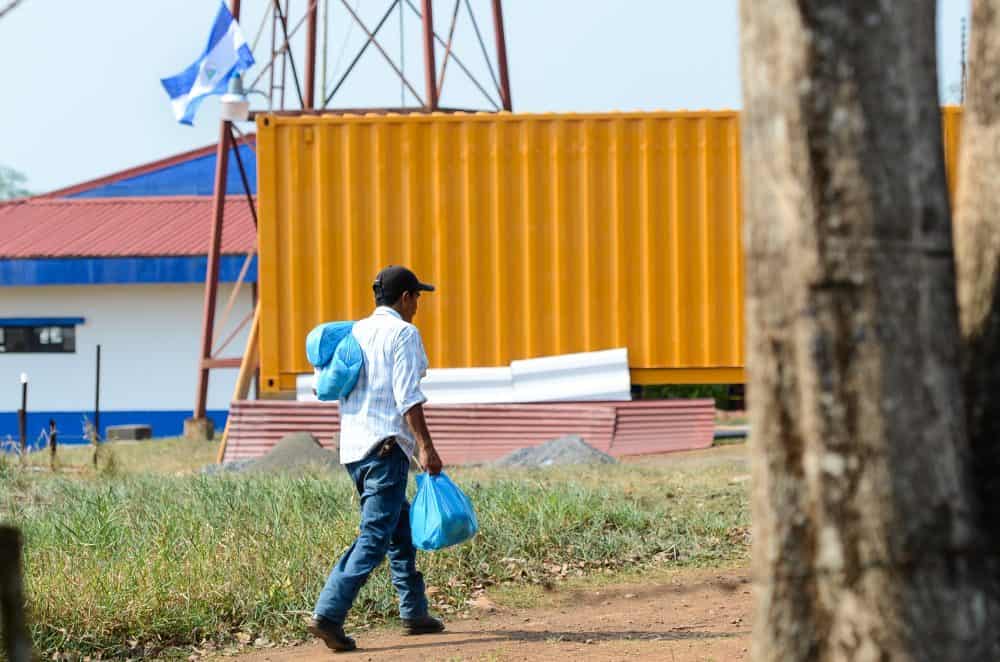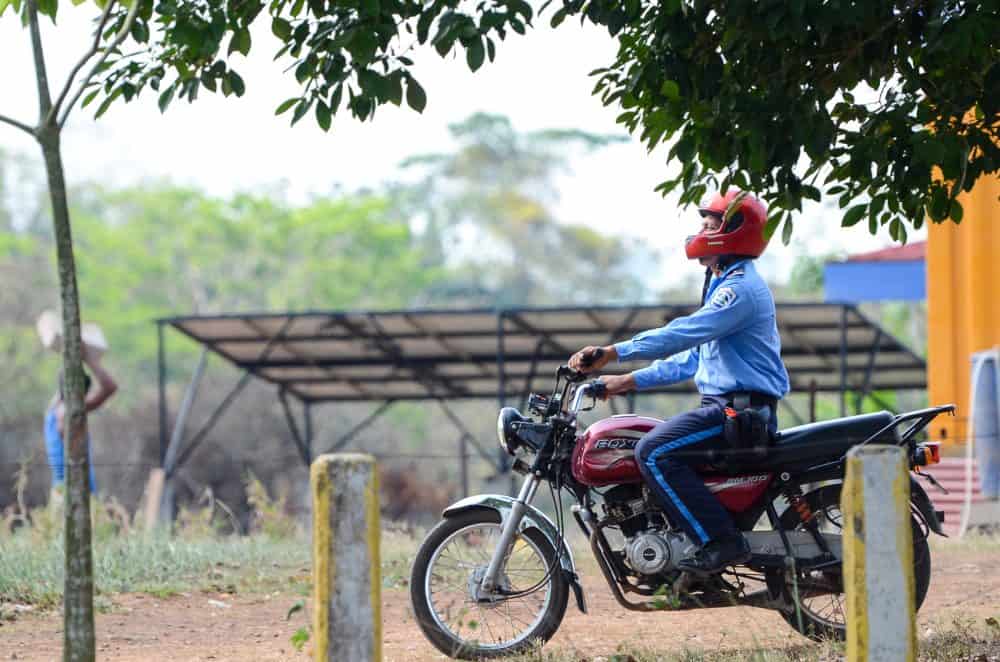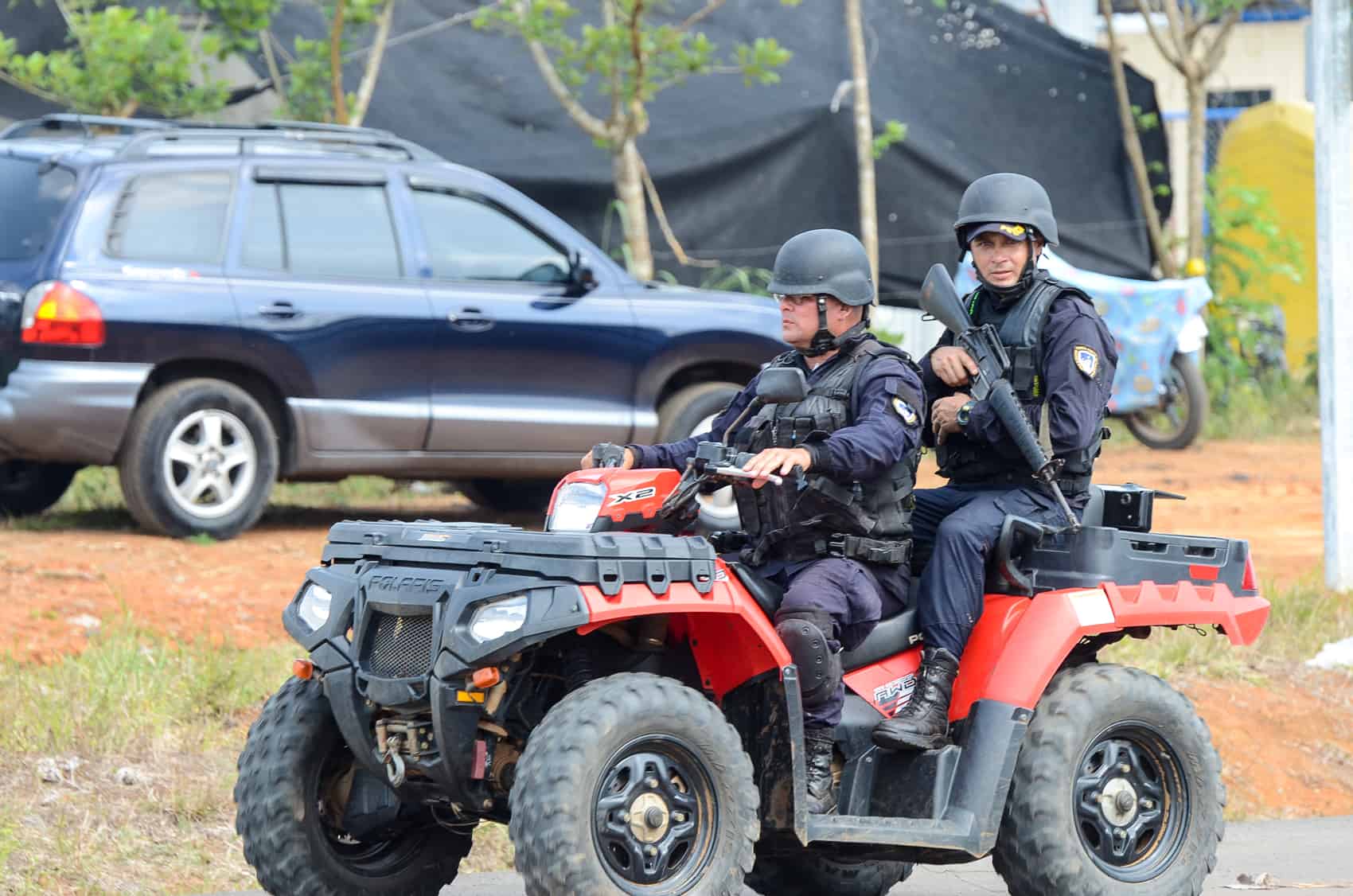LAS TABLILLAS, Alajuela — A mango tree grows out of the border. You can tell it’s the border because strands of barbed wire stretch right through the tree, and this decrepit fence is what represents the international boundary between Costa Rica and Nicaragua. On the Nicaraguan side, a handful of farmers walk up to the tree and jump up and down until they grab a branch. They pull it down, select a green mango, and pluck it. Then they turn to the border guards on the Costa Rican side, laugh merrily, and wave.
Now and again the border guards amble over to the tree with a long tool, root around in the foliage and voilà, a mango plops on the ground. Inside their plaster guardhouse, they have a small salt shaker, and they liberally sprinkle salt over the sour little mangoes and eat them on the spot.
“They’re really good,” one guard says. “They’re best when they’re small.”

Like everything at the Las Tablillas border checkpoint, the mango tree is deceptively serene. In the movies, you might hear someone say, It’s quiet. Too quiet. For several years, that has been the atmosphere here: Costa Rican police stand around in paratrooper boots, cargo pants, Kevlar vests, and tactical helmets. They patrol the back roads with assault rifles. They watch that crippled fence with eagle eyes. For a country without an army, they look remarkably like soldiers.
The tough posture likely stems, at least in part, from an ongoing border dispute between Costa Rica and Nicaragua involving outlets to the sea and a road that begins not far from here and parallels the border for 160 kilometers going east. The two neighbors share another longtime bone of contention: illegal immigration from Nicaragua to Costa Rica.
But over the next few years, everything here could change. Costa Rica opened its side of the Las Tablillas border checkpoint earlier this month. The Nicaraguan and Costa Rican highways now merge here. Truckers, immigrants, and travelers will start to pour through the checkpoint. Immigration officers can expect traffic to increase steadily as Las Tablillas becomes better known.
Costa Rican authorities expect about 40 percent of the traffic that currently goes through Peñas Blancas in Guanacaste to shift to Las Tablillas over the next decade.
The closest population center to Las Tablillas is Los Chiles, a quaint village surrounded by pineapple farms and sugar cane fields. Route 35, which runs through Los Chiles, is a smoothly paved, two-lane highway that extends north all the way up to the border. But otherwise infrastructure here is basic and spread out across the region’s rolling hills.
From the perspective of a poor Nicaraguan, Las Tablillas is a perfect place to try and sneak into Costa Rica. A smoothly-paved highway, Route 35, leads straight from the border to connect with other major roads, and a brand new bridge crosses the wide San Juan River on the Nicaragua side. When immigrants wanting to avoid authorities reach the fence, they can walk a narrow dirt road until the “border” is nothing more than a row of trees and bushes. A network of “coyotes” operates on both sides, helping people navigate the landscape, arranging rendezvous points, and even picking up migrants and driving them to their final destination.

“They don’t stay here,” Officer Baéz, a seasoned patrolman stationed at Las Tablillas, said of Nicaraguan immigrants. “As soon as they cross, they head right away to Alajuela, Heredia, San José. That’s where they look for work.”
In 2014 Costa Rica’s immigration authority estimated the number of Nicaraguans living in Costa Rica to be nearly 300,000, around 6 percent of the total population. But the real figure — including immigrants living in the country illegally — is anyone’s guess. The benefits of traveling from the poorest country in Central America to the second-richest feed temptation, especially when the border is nothing more than a row of trees.
Increased development around Las Tablillas has made passage to the border very easy for Nicaraguans seeking a new life. But the new immigration facilities also mean a better-patrolled border.
“We catch an average of 60 people per day,” Baéz said. “The other day, we caught 300.”
Catching large numbers of people has become so routine that watching the chase unfold looks like a schoolyard game of hide-and-seek. Costa Rican police hop onto ATVs and drive along the border. They find groups of people hiding in the woods or fording streams. They herd them into trucks and drive them to the immigration post in the middle of Los Chiles. After expedient processing, they escort them to the border and the Nicaraguans step over the barbed wire fence.

Most of these interactions are simple and nonviolent. Rarely are these migrants smuggling serious drugs or weapons, although it has happened. Arrests occur with such regularity that you may spot police searching cars and frisking ragged-looking men by the side of the road at almost any time of day. But despite the regularity, the situation is still tense, because no one on Baéz’s team wants to provoke an international incident.
“I served on the Panamanian border before this,” another patrolman said. “It was very different. The political situation is different. The relationship between the two countries is different. You think about different things.”
It is impossible to know exactly how the new immigration post will affect the region. According to the Nicaraguan newspaper La Prensa, 700 people legally crossed the border into Costa Rica during its first four days in operation. If all goes according to schedule, this little outpost will gradually absorb more and more traffic.
Among the unpredictable outcomes: Whether safe and legal passage will reduce border-hopping or encourage more of it.
“On the positive side, there will be more commerce, people staying at local hotels, and souvenir shops,” said Álvaro Wiessel, head of the Chamber of Tourism in Los Chiles, the closest town to Las Tablillas. “On the negative side, there will be drugs, illegal immigration, and some crime.”
Whatever is coming, the quiet days are likely over.





